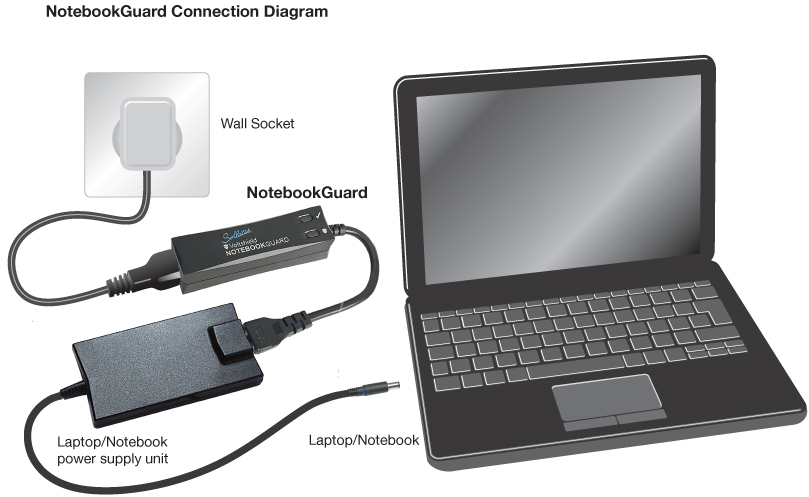The most Complete Power protection for Laptops & Notebooks
The most damaging power condition to laptops is sustained over voltage. Spikes & Surges are also a risk for Laptops and can cause catastrophic results by damaging the charger, main laptop or corrupting data.
(for a complete list of power problems, definitions and illustration, refer to Illustrated Power Problems)
The Sollatek NotebookGuard (NBG) is a complete simple & effective protection solution. As it detects over voltage - whether for a brief period or sustained for seconds, minutes or hours -it will disconnect the power and will only reconnect when the mains returns to a safe level. This Automatic Voltage Switcher (AVS) function is present in all Sollatek's Volteshield range of products.
During this time, the Laptop will
use its own battery to carry on working safely. This in effect, will isolate ALL power problems from the laptop and ensure safe operation. The Laptop's batteries in combination with the NotebookGuard's AVS function work like a UPS (Uninterruptible Power Supply) at a fraction of the cost and, as the unit is very small & light, can be carried in the same case as the laptop.
During Transient Spikes & Surges which could also produce serious damage to the laptop. The NBG will fully absorb these without
interruption and thereby fully protecting the Laptop.
There are similar model in the field but none have the Sollatek AVS function. Some do add line/data protection socket, however as vast majority of laptop users depend on wifi, omitting this
from the NBG ensures that it reaches the 99% consumer at the most affordable
cost. The protection priority is against mains power interruptions, voltage fluctuations, over voltage,
surges & spikes.
For product evaluation and technical bloggers, please contact Sollatek




